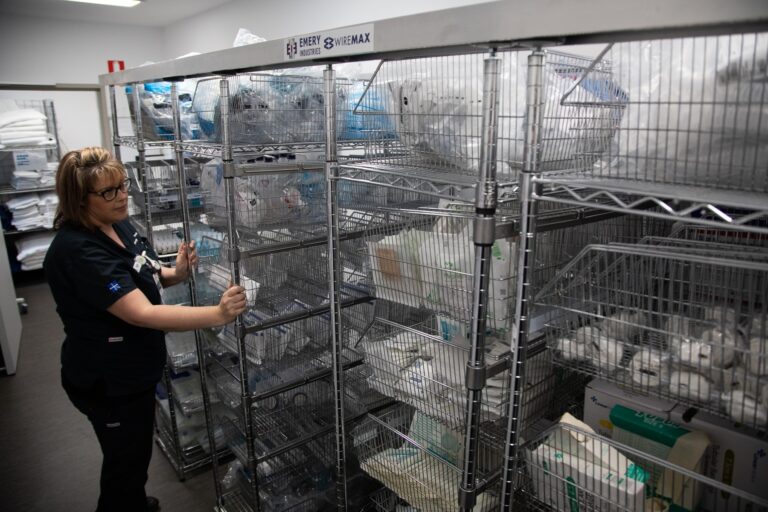Hospital ward organisation is a dynamic puzzle; it involves countless pieces in the form of equipment and supplies that need to fit perfectly within a limited space. Efficient management of this space is a critical concern for registered nurses, doctors, and nurse unit managers. This post will discuss key strategies and solutions to optimise storage and organisation in wards, with a spotlight on Emery Industries’ range of shelving products as potential game-changers.
Effective space management starts with the categorisation of supplies based on frequency of use, size, and their role in patient care. Frequently used items should be easily accessible, whereas infrequently used items can be tucked away.
A structured storage system using labels, colour codes, or digital inventory management systems helps in quickly locating items, tracking stock levels, and managing reordering requirements, thereby minimising clutter and waste.

Among the most impactful solutions to optimise ward spaces are versatile shelving units. Unlike fixed storage solutions, adjustable shelving systems can adapt to evolving needs, making them perfect for the dynamic environment of a ward.
Emery Industries’ range of shelving products are designed with this adaptability in mind. For example, the Wire Shelving Bundle and the Compactus Unit are adjustable, robust, and modular, ensuring you can efficiently store and quickly access supplies. These units help maximise space while ensuring durability and hygiene, vital elements in a healthcare setting.

Wards are continuously evolving with new procedures, technologies, and care protocols. It’s essential to regularly audit storage and organisational strategies to identify inefficiencies or bottlenecks and make adjustments.
A culture of responsibility can also be fostered by involving all staff members in maintaining organisational standards. Regular training and clear communication regarding storage and organisation protocols further contribute to an optimised ward environment.
Efficient ward management is a continuous process demanding constant innovation and effort. By adopting best practices, employing modern shelving solutions, and fostering a culture of responsibility, healthcare professionals can create an environment that supports streamlined operations and superior patient care.
Consider exploring Emery Industries’ comprehensive range of shelving products to help you elevate your ward’s storage and organisational capabilities.
References